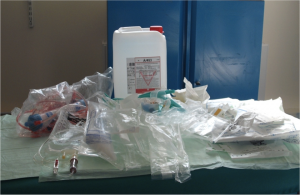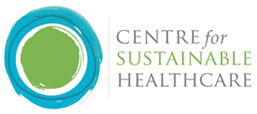- Group home
- You must register/login in order to post into this group.
Improved waste management in the Dialysis Unit Queen Margaret Hospital, Dunfermline

By: NHS Fife
£35,718 (Estimated)
56.3 tonnes CO2e (Estimated)
This case study builds on the Reducing Waste in the Dialysis Unit Queen Margaret Hospital, Dunfermline case study from April 2010 (http://map.sustainablehealthcare.org.uk/nhs-fife/reducing-waste-dialysis...).
A Green Nurse role was established to promote awareness and education on environmental issues in the workplace and minimize landfill waste and inappropriate clinical waste. A waste management hierarchy was developed using the following in order of preference:
REDUCE – reduce the amount of waste produced in the first place (most favoured)
REUSE – using materials repeatedly where possible
RECYCLE – send used materials to make new material for use
RECOVERY – recover energy for waste
LANDFILL – safe disposal into landfill sites (least favoured)
STEP 1: Waste segregation
A major finding from Waste Watch Weeks in 2009-10 was a lack of formalised waste management procedures pre and post dialysis treatments. 2.9kg of waste was generated per dialysis treatment (40.3 tonnes / year). At the start of 2010, 100% of this was sent as clinical waste for incineration. This has a particularly detrimental impact on the environment because of the very high temperatures at which clinical waste must be incinerated. By April 2010 we had reduced this incinerated waste from 100% to 31%, with 69% now being directed into the domestic waste stream because it was not contaminated eg packaging, bicarbonate bags etc.
STEP 2. Recycling
Next, a Domestic Waste Audit was carried out, which identified most of the waste was paper and plastic. We collaborated with Fife Council to divert as much of this as possible from landfill. Domestic waste bins ie black bags were removed from the clinical area and replaced with recycling bins and 83% of domestic waste is now recycled. Grade 7 plastic (saline bags and bicarbonate bags) still remain a challenge but we hope Fife Council will be able to take these soon. Education on environmental good practice is now included in our nurse education programme.
Financial Considerations
The creation of a ‘Green Nurse’ with protected time has been central to the success fo this project. Initial funding for this came via NHS Education for Scotland and the Scottish Renal Association. Fife Council provided recycling bins for free. Diverting clinical waste which is expensive to dispose of into the cheaper, domestic stream saved us £11,273 annually. Removing unnecessary consumables saved a further £24,900 annually. The cost for domestic waste disposal after recycling was £454.74 annually. Overall £35,718 annual saving.
Carbon Savings
Initially 72.5 tonnes CO2e was generated form the incineration of our clinical waste. Which was reduced to 22.5 tonnes CO2e a saving of 50 tonnes CO2e annually. After recycling, 4.7 tonnes of domestic waste was put into landfill. Assuming this was mostly grade 7 plastic, 14.8 tonnes CO2e would be generated by this (this is an over estimate as a proportion was kitchen waste). 23 tonnes of paper and plastic was recycled saving 21.1 tonnes CO2e giving an overall annual saving of 56.3 tonnes CO2e.
Queen Margaret Hospital, Whitefield Road, Dunfermline, Fife, KY12 0SU
The aim of the project was to promote awareness of environmental good practice by staff and reduce cost and carbon emissions with minimal impact on patient care.
(staff time: approx 4 hours per week from a dialysis nurse is spent on environmental awareness and practice.)
